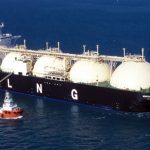The economy is passing through tough times. Economic weaknesses, which might have remained unnoticed for long under normal circumstances and even contributed to higher economic growth rates, are coming to the fore.
The addition of Liquefied Natural Gas (LNG) to the country’s energy mix was described as a game changer when electricity shortages were costing the economy two to three per cent of GDP growth. Successful LNG imports signified a big contribution in economic terms when seen in the backdrop of previous botched attempts.
More than 5,200 megawatts of base-load generation capacity was then added on LNG, although one-fourth of this capacity was contracted under controversial circumstances when system operators flagged up a capacity trap. The GDP growth rate, meanwhile, rose to 5.8pc while the debate about the LNG import, processing and transportation prices subsided even though these were hotly contested at the time.
The capacity trap emerged and high prices started to bite a slowing economy. Spot prices tumbled to historic lows meanwhile. The power sector, which provided the basic reason for LNG imports as furnace oil replacement, started to turn down gas supplies despite commitments. The LNG infrastructure reached the verge of collapse and the supply chain set alarm bells ringing for a default and financial meltdown.
The government must revive economic activities to ensure affordable consumption of contracted LNG supplies
The government is privatising at least two of its LNG-based power plants for around Rs300bn. No change in gas supplies in their power purchase agreements is estimated to entail a cumulative loss of Rs471bn until 2025 when the first term of LNG imports ends. Conversely, an annual subsidy of Rs117bn is required if these plants are freed from the condition of guaranteed gas intake.
In both cases, the one-time sale proceeds of Rs300bn appear economically unreasonable. In a recent meeting, the Economic Coordination Committee (ECC) exempted the power plants on the privatisation list from the guaranteed 66pc LNG intake on a take-or-pay basis. But it was overruled by the federal cabinet when Sui Southern Gas Company (SSGC), Sui Northern Gas Pipelines (SNGP) and Pakistan State Oil (PSO) prevailed on the top leadership claiming the ECC decision would make them go bankrupt.
With the LNG-related infrastructure investment of about $7bn and no buyer to consume the commodity, the chickens have come home to roost. The National Accountability Bureau (NAB) has filed a reference against 10 leading personalities, including former premier Shahid Khaqan Abbasi, in government and the private sector. At least two main characters, including the mastermind of the process, have since become approvers.
Although described by the accused as a politically motivated reference, NAB has so far focused on the allegedly high import price, tolling charges, procedural and legal deviations in the terminal contract and so on. It has told the accountability court that a supplementary reference on charges of money laundering will follow.
Meanwhile, in the 2015-16 audit report placed before the National Assembly last week, the auditor general of Pakistan (AGP) pointed out irregularities worth Rs108bn in the LNG supply chain besides other unquantifiable losses. Normally, such audit objections are settled or regularised at the level of the Public Accounts Committee of the National Assembly on the basis of economic justifications rather than procedural, technical and legal deviations pointed out by the audit.
The AGP pointed out that LNG was purchased at high rates and the Ministry of Petroleum and Natural Resources was responsible for it. It said SSGC overpaid over Rs5.37bn in 2015-16 on account of higher re-gasification rates while Rs33.6bn worth of higher tolling charges were accepted by Interstate Gas Company and SSGC.
Also, the AGP pointed out that about Rs4.5bn was unduly charged to natural gas consumers as the cost of service for RLNG during the said year and the Port Qasim Authority (PQA) had not secured additional dredging of the channel as required under the implementation agreement.
The audit has also highlighted the unjustified payment of about Rs1.5bn on account of fixed capacity charges to the terminal operators by SSGC.
SNGP has been accused of causing a Rs3.1bn loss to consumers and its own accounts through the sale of RLNG to consumers other than independent power producers (IPPs) and the non-recovery of transportation charges from Pak-Arab Fertilisers.
The audit questioned the selection of consultant for LNG transactions and noted that the LNG licence was awarded despite deficiencies under the 2011 LNG Policy.
In another major irregularity, the audit highlighted that SNGP did not obtain standby letters of credit (SBLCs) from IPPs worth Rs55bn for LNG supplies as a security even though similar SBLCs were provided to PSO and SSGC under tripartite agreements.
SNGP kept on reminding the petroleum ministry that a back-to-back guarantee was required for 400 million cubic feet per day (mmcfd) of gas from IPPs. But no such SBLCs were ensured, exposing SNGP to a serious financial risk.
While the audit objections and NAB reference will be contested at relevant forums, the government needs to find a way out through pricing reforms and focusing on the revival of economic activities for affordable consumption of contracted LNG supplies.
The weighted average cost of domestic and imported gas may be a solution to represent the actual economic price of every molecule provided theft and inefficiencies are controlled. Free or subsidised gas is no more an option when such luxuries are unavailable to consumers of competing fuels.







